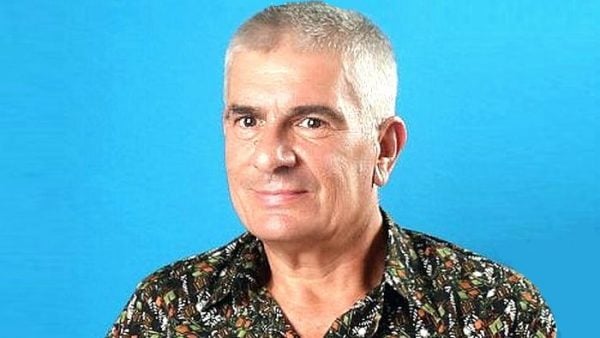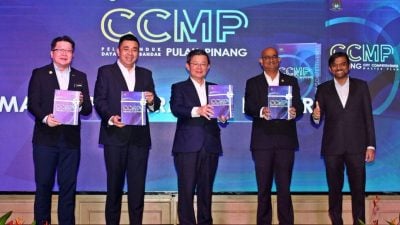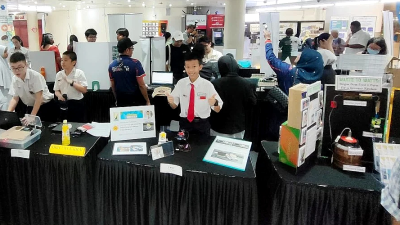
The controversial Penang South Islands (PSI) project exposes some of the weaknesses of national economic and infrastructure planning framework.
Instead of conceptualizing and developing projects that directly benefit the communities, those in charge of the national planning processes are pushing projects that end up benefiting corporations over communities.
Since 2013, the Penang state government has been pushing the PSI project which aims to create three new islands along the southern coast of Penang Island.
One island will be created off Permatang Damar Laut in Bayan Lepas, while the other two islands will be reclaimed along the coast off Teluk Kumbar and Gertek Sanggul.
The PSI covers 17 square kilometers, involving 1,800 hectares of land reclamation.
The PSI has been bundled up with RM46 billion worth of other infrastructure projects, under the Penang Transport Masterplan proposal (PTMP).
This includes the Penang International Airport-Komtar elevated light rail project costing RM10 billion, and the Pan Island Highway link estimated to cost RM9 billion.
The official rationale for this infrastructure bundle is that the PSI would be self-funding except for some bridging loans.
In 2015, the Penang government partnered with Gamuda to create the SRS consortium as its “project delivery partner.”
The dormant PSI project just came alive once again over the last few weeks when the federal government approved RM10 billion to commence works, and the Department of Environment (DOE) approved the Environment Impact Assessment (EIA) subject to 71 conditions which haven’t been released in the public domain.
Work is expected to begin when the environmental management plan (EMP) is obtained in the third quarter of this year.
Back in 2021, the fishing communities along Penang’s southern coast won an appeal against the EIA approval, where the entire process was declared null and void.
Consequently, the Penang government filed a new application, still ignoring concerns from the fishing communities.
Is the PSI project aimed at benefiting the people or as a playground for crony corporations to develop and profit?
The PSI project has many critics among Penang Island residents, especially the fishing communities, domiciled along the southern coast of the island.
Some 6.000 fishermen, led by the Penang Fishermen Association (Pen Mutiara), are reported to be fighting against the project.
They claim the reclamation will gravely affect their ability to earn a living along the southern coast of Penang, as the PSI will completely change the marine ecosystem of the area.
The fishermen claim their grievances have not been taken into account during the EIA process.
The lack of transparency in approving the project and not making the 71 conditions public on the project, has only heightened the suspicions of the coastal fishing communities.
Back in 2019 when Anwar Ibrahim visited the Permatang Damar community, he promised to assist on the matter.
The recent appeals to Anwar have been totally ignored.
Former MP for Permatang Puah Nurul Izzah Anwar, who was vocally against the project, is now silent, as is the resources, environmental and climate change minister Nik Nazmi Nik Ahmad.
Some claim the PIS project is an elaborate scheme to change voter demographics within the southern part of Penang by flooding the area with Hong Kong and Taiwanese exiles, along with disgruntled PRC people, coming to Penang in a form of self-exile, a sort of Penang version of Project IC in Sabah.
Others claim the whole project was hatched to provide a business opportunity to benefit the “project delivery partner” in the project, along similar lines to the profit bonanza created through the development of the City of Dreams on steroids.
Others query the financial arrangements of the PTMP, claiming the time frame to reclaim the land at PSI is too long-term a time frame to finance the RM10 billion light rail.
In addition, any positive funding from the PSI would not be near enough to fund the other two projects in the mega-package, as the Penang state government can only expect to receive RM600 million out of a structured deal with SRS.
However, if the premise of the PSI project is correct, the figures just don’t stack up financially.
The question has to be asked why the project is actually going ahead?
Public project becomes private land
In 2021, Penang chief minister Chow Kon Yeow revealed that one of the islands to be reclaimed would become private.
The reason given was that the Penang government was unable to secure a loan or financial support from the federal government to jumpstart the project.
The reclaimed island would be turned over to a 30-70 jointly owned venture between the Penang state government and SRS, giving the entity the exclusive right to develop and sell land on the reclaimed island.
There is no discussion about overturning this agreement, now the federal government has pledged to provide RM10 billion.
PSI exposes weaknesses in the project planning process
The PSI project exposes fundamental weaknesses within Malaysia’s economic planning processes which form the basis of the nation’s five-year plans.
The Economic Planning Unit (EPU), under the Prime Minister’s Office (PMO), which conceptualizes and plans infrastructure projects, is unduly influenced by politicians in cahoots with corporate entities in the background.
This is certainly the case with PSI, promoted by Chow Kon Yeow over the last four years.
The EPU as the apex planning body in the country has failed to take into account community wants, needs and aspirations, and has certainly failed to balance these out with the top-down plans made by the Penang state government.
The planning processes in Malaysia are being abused and overridden to shift opportunities and resources over to corporations hidden in the background.
Corporations are benefiting at the expense of communities around the country.
This can be clearly seen in the expansive number of white elephant projects on the nation’s infrastructure books.
The planning processes are perpetuating political-corporate linkages where some parties make a windfall out of expenditure earmarked for development.
This is a form of corruption and abuse of power. It’s embedded within the system and thus not easily eradicated.
In the case of PSI, it hasn’t been really determined if there is a real public benefit.
Most of the rationale behind the project appears to be commercial. The financial details require much more scrutiny.
Penang state election
There is little doubt the PSI will become a major issue in the coming state election.
The PSI project also highlights how much the system favors certain corporations that receive special treatment.
This predicament seems to be alive and well in the Anwar administration as well, just as has been the case in previous governments.
The bottomline is that national planning processes provide a massive advantage to politically linked corporations, providing some with massive rent-seeking windfalls.
Malaysia needs to shift away from corporate-centric beneficiaries towards rakyat-centric beneficiaries in social-infrastructure development.

(Murray Hunter has been involved in Asia-Pacific business for the last 40 years as an entrepreneur, consultant, academic and researcher. He was an associate professor at Universiti Malaysia Perlis.)
ADVERTISEMENT
ADVERTISEMENT







-3-400x225.jpg)
































